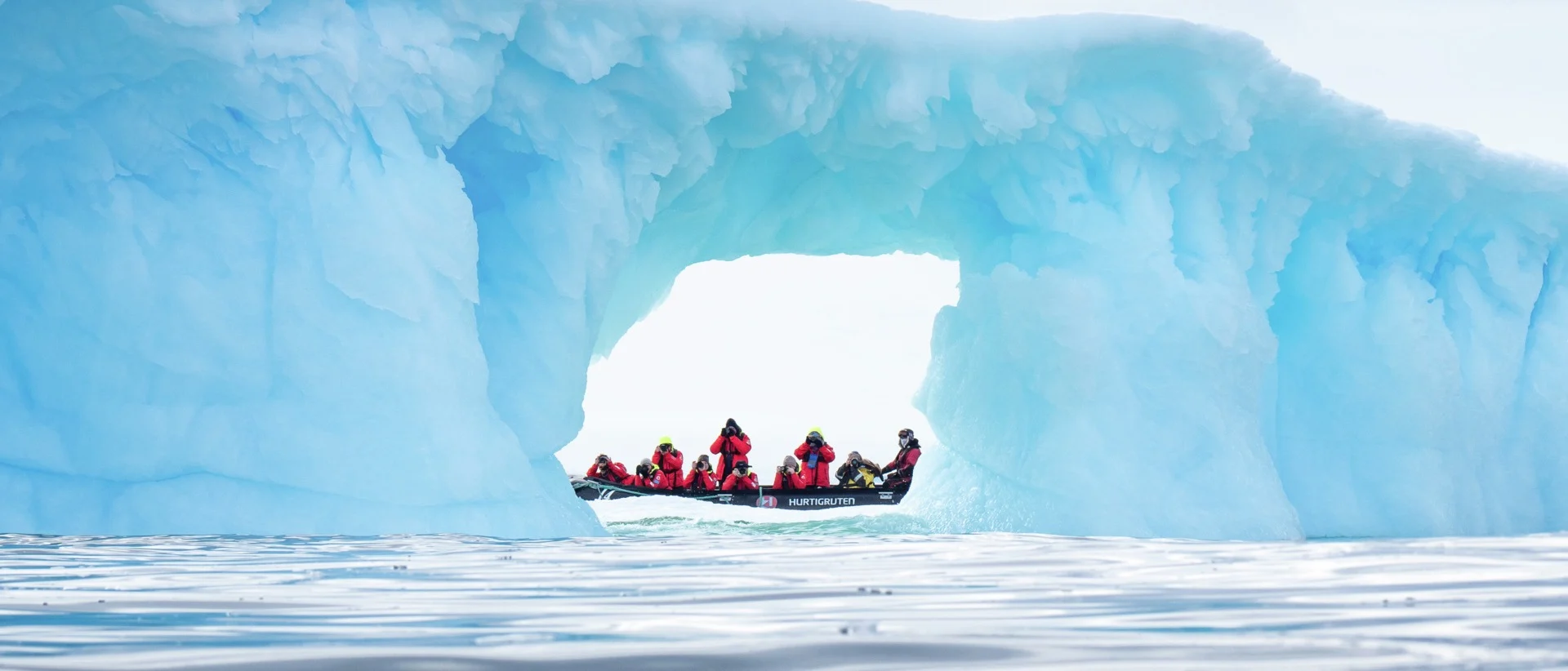10 fascinating Antarctic features
10 Amazing physical features of Antarctica that will inspire you to learn more about this wonderful landscape!
5 mins read
1. How thick is the ice on Antarctica?
The main thickness of the ice on Antarctica is about 2,16 km, that is over 7000 ft. One of the most fascinating things about Antarctica is that it is, in fact, a landmass. Explorers traveling to the north pole were only ever standing on ice and hope - south pole explorers have something more substantial underneath. However, in parts of Antarctica, the land itself is far underneath indeed.
2. Are there any cities in Antarctica?
There are no indigenous population on Antarctica today, and it has never been. Antarctica is an isolated island, both in terms of distance to main land, climate and the storminess of its seas. The people being on Antarctica are either tourists that often lives on a cruise ship, or scientist who work on the research stations. Access to Antarctica are permitted by the Antarctic Treaty. If you want to go there for a expedition or just visit, you’ll need a permission to go. However, if you book an expedition cruise to Antarctica with Hurtigruten, there is much easier to have a comfortable stay and still experience the amazing nature and wilderness.
3. Research stations in Antarctica provides scientific research
Though there are no truly permanent residents in Antarctica, there are people there all year round. The continent's isolation and harsh climate, though difficult to live in, make it perfect for all manner of study. There are around 45 permanent stations and in summer there are 30 camps in addition. Researches stay in Antarctic bases and study the continent's' life, geography and temperatures. It's also a prime location for astronomers - the clear conditions and near-permanent darkness in winter make for ideal stargazing.
4. Hidden lakes in Antarctica
Antarctica has a secret lake - many secret lakes, in fact. Scientists have drilled far beneath the thick glacial ice atop Antarctica to find liquid lakes below. The spectacular hidden lakes are just one of many features of Antarctica. The most exciting part: These lakes are absolutely teeming with microscopic life. Scientists can use water samples to learn about how these miniscule creatures survive in such a harsh environment. This could even give researchers an idea for how life might survive on other planets, such as below the ice found on Mars.
5. Antarctica landmark – HUGE mountains
A huge mountain chain called “The Transantarctic Mountains” divides the Antarctic continent into eastern and western regions. The series of mountains is one of the longest in the world, and extends over 2,000 miles. A good portion of these mountains are buried beneath Antarctica's ice and snow, but many of the peaks are steep enough to be snow-free. Alongside the Transantarctic Mountains and in the surrounding water both whales, seals, sea birds and penguins of Antarctica lives and have their habitat. Read more about the amazing wildlife and predators on Antarctica.
6. Midnight sun and permanent Antarctic darkness
When you travel to Antarctica, you'll get to see one of the most fascinating sights in the world: the midnight sun. This is a exceptional feature of Antarctica. South of the Antarctic circle, there is a period of months when the sun never sets. Summers near the south pole are perpetually bright, which means you can sit outside and read at midnight, if you like. Researchers who stay all year round also experience the opposite - permanent Antarctic darkness. However, tourists can only see this astronomical event in the Arctic circle, as Antarctica's tourist season ends after summer.
7. Volcanic activity beneath Antarctica’s ice
There are plenty of extinct volcanoes in Antarctica, but there are two active ones, as well. One of these is at Deception Island, and it's an incredibly interesting and rare type of volcano. Located far beneath Antarctica's ice, it actually has subglacial eruptions, which means that all of Deception's activity happens below the surface of the ice. Antarctica's other active volcano, Mount Erebus, is picture perfect. It's the continent's most active volcano, and it looks like a science experiment brought to life. Mount Erebus is one of the only volcanoes on earth with a constant molten lava lake in its crater.
8. Katabatic wind
Antarctica's geography and climate means it gets a special kind of wind called katabatic. These are winds that are formed when air moves down a slope. In Antarctica, the mountain range paired against large, flat expanses makes for a dramatic wind combination. Some of the highest wind speeds in history have been recorded on the southern continent - in fact, the world record for wind speed is tied between Antarctica's Dumont d'Urville station and Mount Washington, New Hampshire, both of which have experienced winds of 320 kilometres per hour.
9. Antarctica is abundant in natural resources
Most of the planet's freshwater sits in Antarctica's ice. This ice-covered continent actually contains the vast majority of Earth's freshwater: about 70 percent. This is one of the many reasons the ice cap is such a precious resource - as that ice melts in Antarctica, it mixes into the saltwater surrounding it. Desalination, or the process of removing freshwater from saltwater, is notoriously tricky to do on a large scale, which means it's vital to keep that freshwater separate and safe.
10. Meteorites – go space rock-hunting in Antarctica
If you've ever wanted to search for a meteorite, Antarctica is the place to do it. The continent has earned a reputation for being perfect for finding fallen space rocks. There are two main characteristics that make Antarctica so great for meteorite enthusiasts: the white expanse and the ice drifts. The monochromatic landscape makes the dark rocks stand out, and the ice drifts tend to drop them all off in the same area. The result is easy-to-find space stuff.
